Blåmannen Ikaros: the first free ascent by Thomas Meling
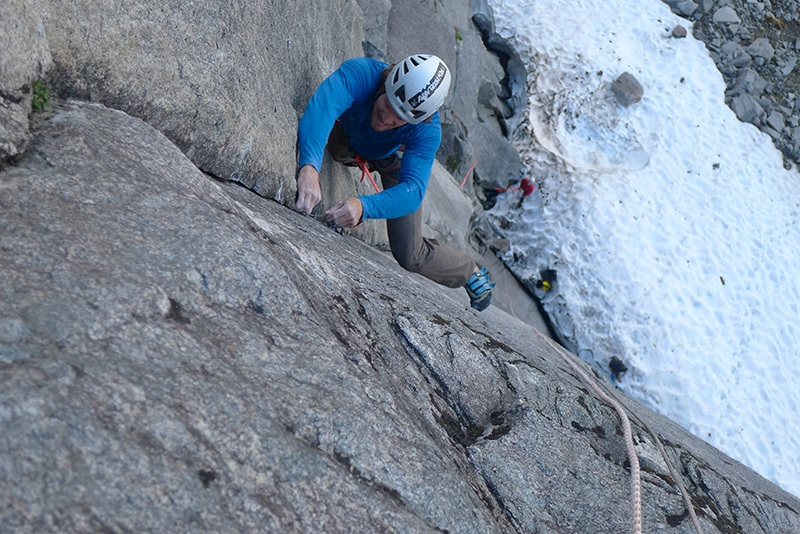
 1 / 6
1 / 6The north face of Blåmannen is one of Norway’s three main big walls (Troll Wall and Kjerag being the two largest), and has seen visits from big international names like Auer, Macleod, Mayr and Berthod. Located on the island of Kvaløya, its majestic profile is seen from town, beckoning those who live there on a daily basis. Being no more than 400 meters at the highest, it barely deserves the moniker "big wall". But any lack in height is firmly made up for in steepness and severity.
While its golden age of free climbing is still in the making, local hard men like the Nesheim brothers pioneered the climbing on Blåmannen in the 80’s, putting up classics like Atlantis and Arctandria. First in summer and later in winter, as was often their fancy. Ethics was already very important; Håvard Nesheim tried to make the first ascent of Atlantis without using pitons. Inspired by Yvon Chouinard’s philosophy of clean climbing he took a ground fall on the first pitch, zippering all his square nuts! He later returned with pitons. Their film "Veggen" (The Wall) is an inspired and inspirational look into the minds of northern Norway’s most prolific climbers of the era. As they battle physical hardships of wet, steep rock and the pull of mundane, everyday life the myth of Icarus compels them to keep moving up, while warning them of the inherent dangers of climbing. Both the film and the myth must have inspired Robert Caspersen in opening "Ikaros" in the summer of ’94. Climbing solo over three days he chose a soaring line of cracks and dihedrals.
Almost 20 years later Ikaros seemed like the most obvious place to look for a new free route. Luck is an essential part of free climbing long routes in the arctic, but for my ascent the relevance of luck would only extend to a matter of weather. Icarus was given wings by his father so he could escape from captivity, but my father is more of an office type. Having no wings I resorted to fixing rope from the summit. For the next few weeks I would hike up to the base after work, usually by myself. Cleaning the cracks and working the moves on a micro traxion I soon realised the beauty of the line. The fact that the moves eventually unlocked their secrets made me no less infatuated. It was time to get on the sharp end.
My friends Daniel Hallgren and Espen Jensen joined me for the attempt, following or jumaring as I led the pitches. Still early June there was plenty of snow, an almost wintery feel at the base of the climb. The north-facing wall was still shaded in the late afternoon, the summer sun not hitting the route before 10 in the evening. Surprising myself in succeeding on the crux first pitch (7c) I gritted my teeth for the next pitches while Daniel, belaying, was disappearing in the rising fog. The excitement almost made us forget the hardships, and maybe it was the cooling effect of the fog that kept us from flying ever higher towards the heart of the sun. Eight hours after setting off we summited in a complete whiteout, elated. Were it not for the fixed lines tying us to the ground we would surely have kept going, ever higher, like Icarus.
Facts:
- No bolts. Please respect the local ethic of not placing bolts, nor unnecessary pitons, whether it be on new or existing routes, including belays and abseil points.
-
After the modern era of free climbing on Blåmannen began with Erik Massih’s attempts on Arctandria in 2005, we saw an explosion of activity in the exceptionally dry summer of 2011. In chronological order these were the free routes as of today: Atlantis (7b/7b+), Arctandria (8a/8a+), Ultima Thule (7b+), Pishtaco (7b/7b+), Peter Pan/Tingeling (7b+), Bongo Bar (8a), Febris (7c) and Ikaros (7c). In addition, Nattskiftet was climbed using only a few points of aid.
- Many of the free routes are still climbed by aid parties. There is of course nothing wrong with this, but it should be noted that Atlantis, Ultima Thule and Pishtaco are all regularly climbed hammerless (regular is not really the right word, no routes on Blåmannen are climbed regularly). In 2013 local climber Jonas Jakobsen climbed Arctandria, without a hammer, in an incredibly impressive single push of less than 30 hours. It was his first time soloing a wall!
- In other interesting news the bottom half of Ultima Thule’s first pitch fell out in the late fall of 2012. Massive, apartment size blocks landed on the little stream where one could usually fill water. Regardless, the route was climbed at least once last summer, but a new "first" free ascent still remains. It goes to show that even super solid granite walls sometimes shed some dead weight. Let’s all keep in mind that one day the Boot Flake on The Nose will leave the mothership, too.
by Thomas Meling
Thanks to: Petzl, Beal and EB shoes
| Expo.Planetmountain | |
| Expo Petzl | |
| www | |
| www.blixt.no | |



 Copia link
Copia link

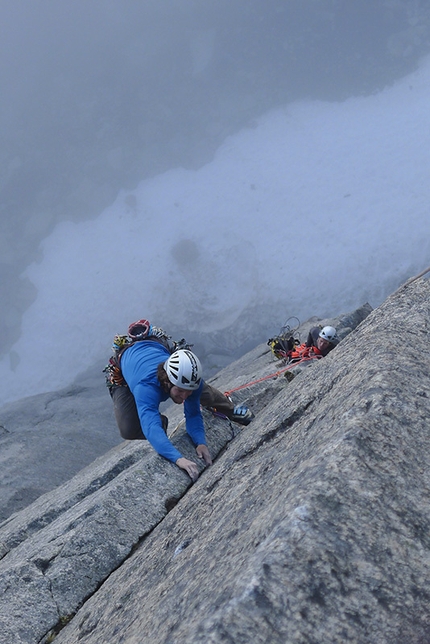
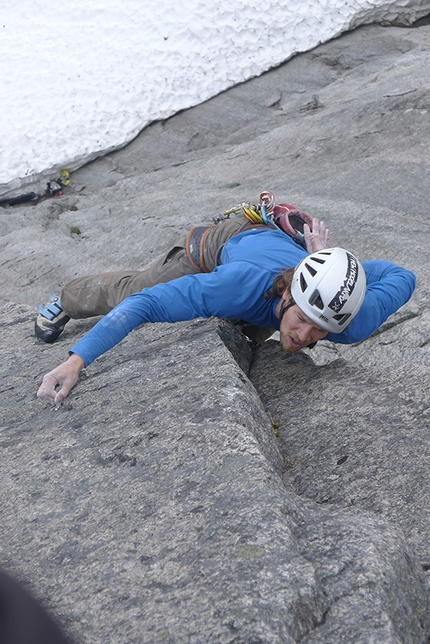
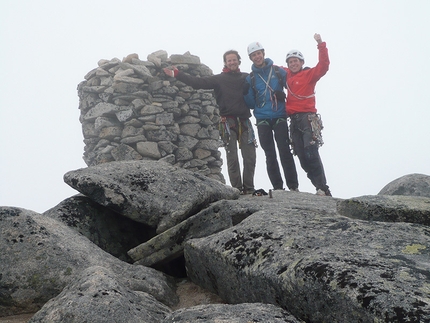
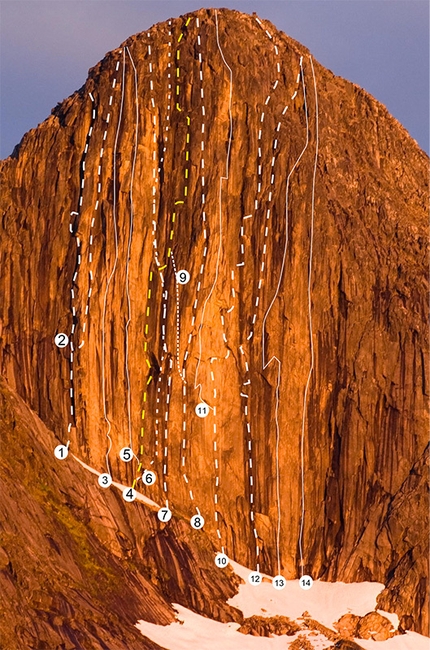
 See all photos
See all photos






















